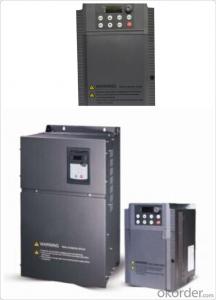1.5kw Solar Inverter
1.5kw Solar Inverter Related Searches
Ac Inverter For Solar Panels Solar Panel With Ac Inverter Gas Furnace With Ac Panda Hot Water Bottle Cover Minion Hot Water Bottle Cover Abb Solar Water Pump Inverter Solar Water Pump Philippines Extra Long Hot Water Bottle Solar Panel Dc To Ac Inverter Old Fashioned Hot Water BottleHot Searches
Grid Tie Solar Inverter Price Solar Grid Tie Inverter Price Solar Inverter 1500w Price 1.5kw Solar Inverter Price Solar Inverter 1.5kw Price Solar Inverter Shop Near Me Solar Inverter Dealer Near Me Type Of Inverter For Solar Types Of Inverter For Solar Used Solar Inverter For Sale Inverter Size For Solar System Solar Edge Inverter For Sale 5kw Solar Inverter For Sale Solar Inverter For Sale Solar Inverter For Battery Solar Inverter For Split Ac Solar Inverter For Laptop Solar Inverter For Fridge Solar With Inverter Price Solar Inverter With 2 Battery1.5kw Solar Inverter Supplier & Manufacturer from China
Okorder.com is a professional 1.5kw Solar Inverter supplier & manufacturer, offers integrated one-stop services including real-time quoting and online cargo tracking. We are funded by CNBM Group, a Fortune 500 enterprise and the largest 1.5kw Solar Inverter firm in China.Hot Products
FAQ
- The advantages of using a transformerless solar inverter include increased efficiency, reduced size and weight, lower cost, and improved reliability. Due to the absence of a transformer, these inverters are more energy-efficient, resulting in higher electricity production from the solar panels. They also have a smaller form factor and weigh less, making them easier to install and transport. Transformerless inverters are typically cheaper to manufacture, leading to cost savings for consumers. Additionally, their simplified design without a bulky transformer reduces the likelihood of component failure, enhancing the overall reliability of the system.
- Yes, a solar inverter can be used with a solar-powered electric fence system. The solar inverter will convert the direct current (DC) power generated by the solar panels into alternating current (AC) power, which can then be used to power the electric fence system. This ensures that the fence receives a constant and reliable power supply from the solar panels.
- Photovoltaic grid-connected inverter problem
- But Baidu Encyclopedia clearly pointed out: the zero line is the secondary side of the transformer leads the neutral point of the line, and the phase line constitutes a circuit for power supply equipment.
- To calculate the power loss in a solar inverter, you need to determine the difference between the input power and the output power. Subtracting the output power from the input power will give you the power loss.
- A solar inverter plays a crucial role in the overall system performance of a solar energy system in different weather conditions. In sunny weather, the solar inverter efficiently converts the direct current (DC) generated by the solar panels into alternating current (AC), optimizing power output. However, in cloudy or overcast conditions, the solar inverter mitigates the impact of reduced sunlight by employing maximum power point tracking (MPPT) technology, ensuring that the system operates at its peak efficiency and extracts the maximum available energy from the panels. Additionally, advanced inverters can also provide grid stabilization during extreme weather events, such as storms or voltage fluctuations, safeguarding the system and enhancing its performance and reliability. Overall, a well-functioning solar inverter is essential for maximizing energy production and maintaining optimal system performance in varying weather conditions.
- The role of a solar inverter in a solar-powered telecommunications system is to convert the direct current (DC) produced by the solar panels into alternating current (AC) that can be used to power the telecommunications equipment. It also ensures that the AC power is stable and at the necessary voltage and frequency for the proper functioning of the system.
- A solar inverter handles high temperatures by incorporating various cooling mechanisms such as heat sinks, fans, and thermal management systems. These components help dissipate heat generated during the inverter's operation, preventing overheating and ensuring optimal performance even in hot climates.
- Yes, there are various government incentives and rebates available for solar inverters. These incentives vary from country to country and even within different regions. They can include tax credits, grants, and rebates offered by federal, state, or local governments. It is recommended to check with relevant government agencies or consult with a solar installer to determine the specific incentives available in the desired location.















































